
NEWS
Cat which travels through the world of painting, and how to preserve your feline cuteness forever in a work of art.
Seguite TRiCERA su Instagram e date un'occhiata ai nostri artisti creativi
5%OFF e spedizione gratuita 1° acquisto
FIRSTART5
10%OFF sul 2° acquisto dopo il 1°!
Benvenuti in TRiCERA
Hi there! Siamo lieti di averla qui 🎉
Potresti descriverti?
Ospite
TRiCERA will be holding a group show "NO BORDER" from November 21 (Sat) to December 5 (Sat). In this article, I would like to explain the point of choosing the artists and the highlight of each artist.
Enjoying the "unknowability" of art
This year, we have selected artists whose works are difficult to distinguish by genre or line, and whose works cannot be viewed in a conventional way.
There are many genres of art, both in Japan and overseas, and now and in the past. I think that many of the artists selected for this exhibition are difficult to explain within the existing framework. But the fact that they can't be put into words may be proof that they have something new to offer.
It is a privilege of contemporary art to be able to enjoy it with our eyes, of course, but also to be able to enjoy the appeal of the work with words.
Please enjoy the very thoughts of the artists behind the paints and canvases.
About the Participating Artists - Points of Interest
Naoya Hirata | Naoya Hirata
Hirata, who was born in Nagano in 1991, is characterized by his attitude of creating sculptures in a virtual space using data collected from the Internet. This is why he calls himself a sculptor. Hirata believes that "sculpture is something that has spatiality and temporality," and what he is doing is traditional sculptural work, just with a different take on existing space and materials (steel and wood ). His works make me think, "Are digital and real synonymous? His works make us think, "Are the digital and the real synonymous?" and above all, they make us question space and time for us as modern people.
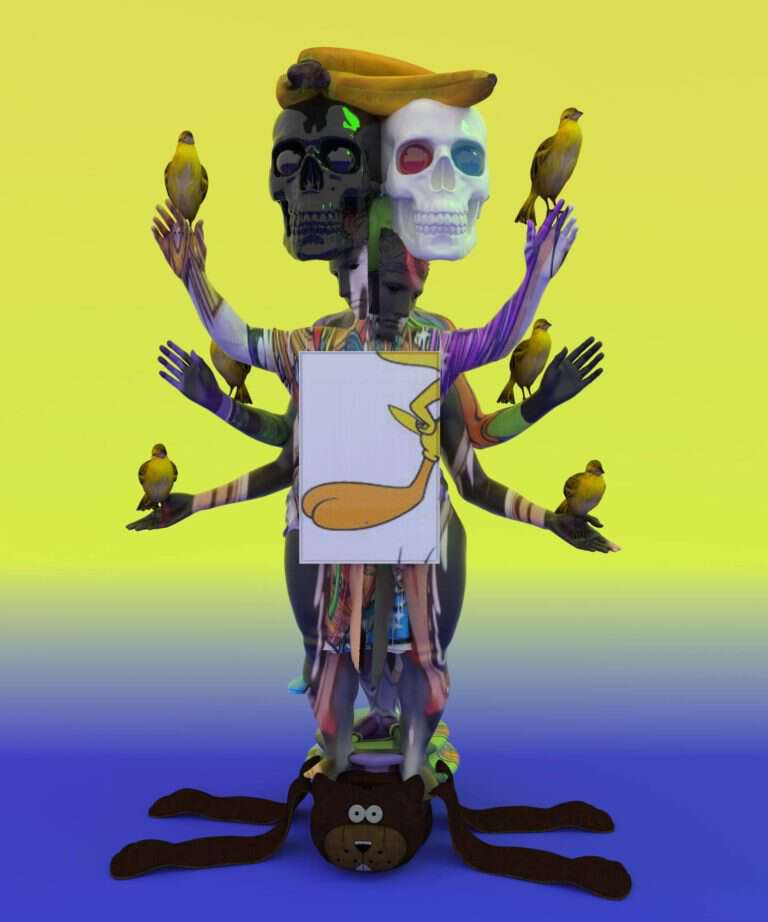
The Prophet 2019 33 x 27.5cm Digital silver print on aluminum alloy Edition1/3
Naoyuki Hata | Naoyuki Hata
Hata, who is based in Kyushu, has recently been working in the style of painting his subjects with colors and photographing them. The human eye sees things and judges colors based on the reflection of light, but looking at Hata's work, I think it directly relates to the thought that the colors we see may not be the true colors. In a way, your photographic works are like a test of human vision.
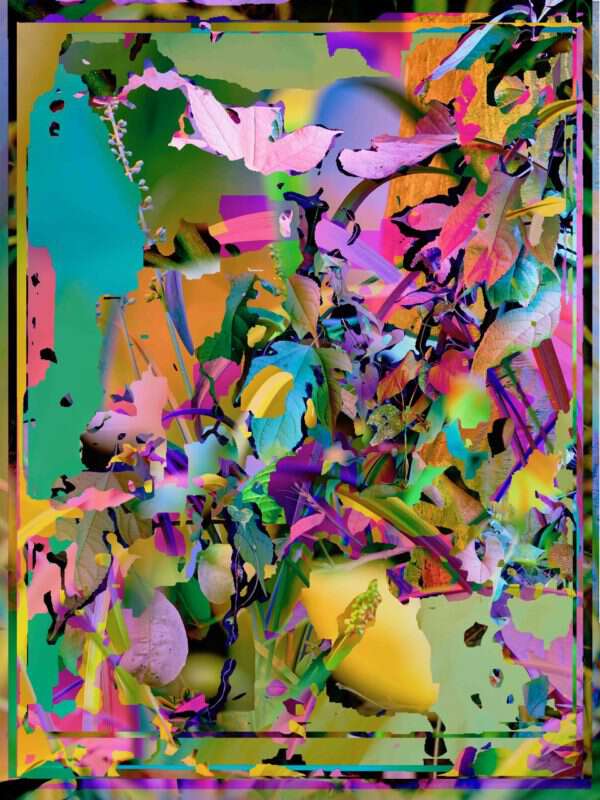
g/b//u/ #1 2020 29.7 x 42cm Digital Silver Print Edition1/10
Shunsuke Saiki | Syunsuke Saiki
Saiki is a painter who creates paintings using the canvas as a display. For those of us who depend on smartphones and PCs for most of our information and communication, the display of the terminal is close to the eyes and the field of vision itself, and I think that in a sense, Saiki's paintings that imitate the display, which is the perspective of modern people, are themselves very three-dimensional. In a way, I think his paintings are very three-dimensional in their very existence. There's a certain cynicism to them, as if you've taken out our eyes themselves.
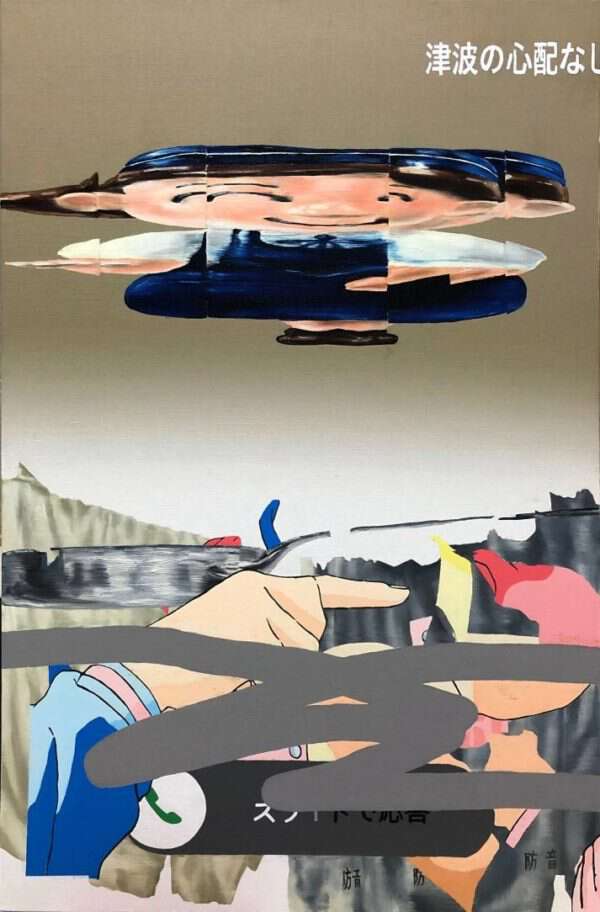
Everyday Life and Dystopia 2019 60.6 × 91cm acrylic on oil on canvas
Ayaka Tadano | Ayaka Tadano
Ayaka Tadano is a painter who uses Japanese painting techniques and contemporary themes. Her landscape paintings depict the ephemeral aspect of "we humans who will disappear someday. The surface of Japanese painting is rough because of the use of mineral-based paints, and I think the sense of things combined with Tadano's theme of "eternity and things will disappear one day" creates a very sentimental effect.

Still on the Road 2020 35×50cm, mineral pigment on wood panel, Japanese paper
Zeng Chao
Born in China, Zeng Chao is a mash-up of traditional Chinese painting and contemporary painting. In China, the traditional evaluation point for a painting is "how much qi is expressed." By deliberately making the brushstrokes visible, he expresses the artist's breathing and the fluctuation of emotions while painting, making the qi visible. In other words, they are paintings in which the painter's presence is very visible.
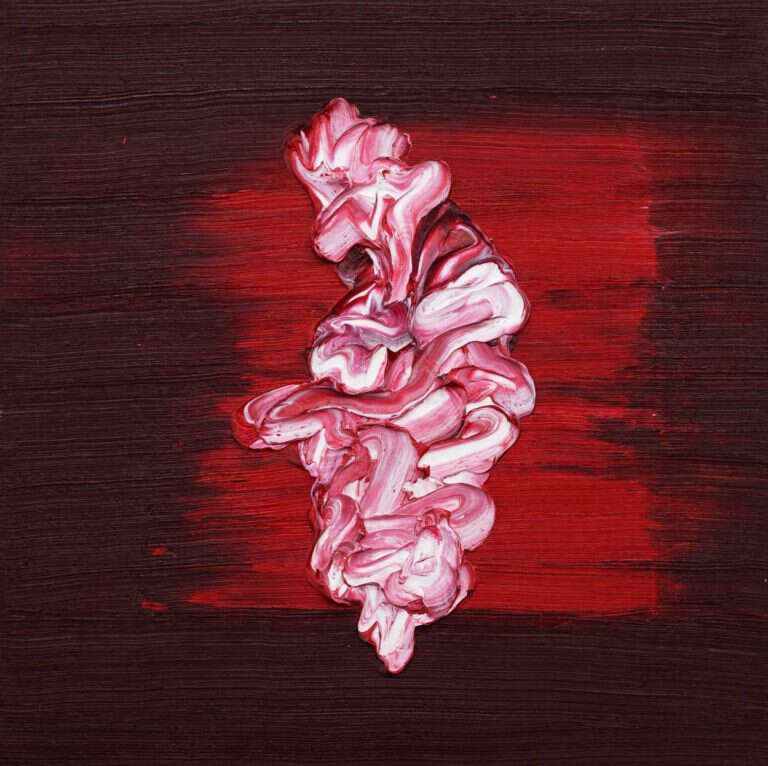
KS190829 2020 53×53cm oil on canvas
Neil Tomkins - Neil Tomkins
Neil Tomkins is obsessed with the relationship between real landscapes and the emotions of the people who see them. He believes that people look at their own emotions through the landscape, and that when they look at the landscape and remember it, their feelings are mixed in.
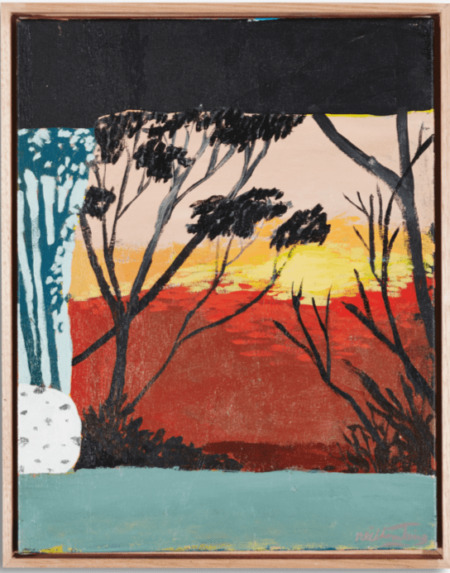
Morning Sprit 2019 46×36cm acrylic on canvas
Gahyo Choe
Korea-based artist Gahyo Choe's work is interesting in that she creates space from scratch, to put it simply. She sketches the dreams she has had and then builds up the landscape by p iecing them together, applying very thin layers of paint to express the texture of the dreams. In the context of painting, it's more like abstract painting, but it's also figurative in that it depicts the vision in the dream. It seems to me that I am drawing a very delicate line, like the relationship between dreams and reality.
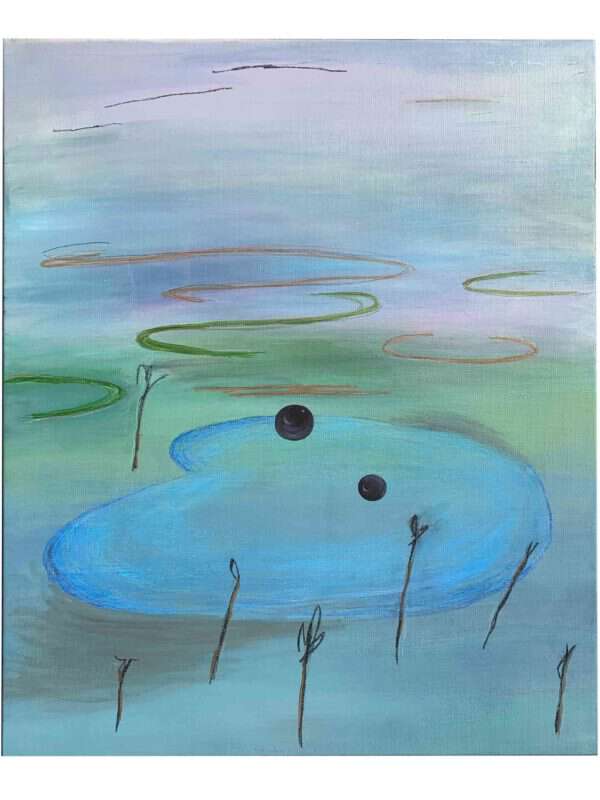
Free world#1 2019 65×53cm gouache, oil pastel on canvas
To know art
Whether it's a painting or a performance, I think the one thing you can't escape about art is that it has to be visible. Visual information is very powerful. It is said that people are 100% what they seem. However, I think that art is a way to express the creator's emotions, thoughts, history, and social conditions through the language of the object. Of course, it's fine if the work is complete visually, but I think it's more fun to appreciate the ideas that exist behind the work.
For example, "Why is this Picasso painting such a mess? If you look at it in a different way, the work of art has a mechanism like a riddle. Perhaps one of the joys of the riddle of art is finding your own way to solve it.
Scrittore
Shinzo Okuoka
TRiCERA will be holding a group show "NO BORDER" from November 21 (Sat) to December 5 (Sat). In this article, I would like to explain the point of choosing the artists and the highlight of each artist.
Enjoying the "unknowability" of art
This year, we have selected artists whose works are difficult to distinguish by genre or line, and whose works cannot be viewed in a conventional way.
There are many genres of art, both in Japan and overseas, and now and in the past. I think that many of the artists selected for this exhibition are difficult to explain within the existing framework. But the fact that they can't be put into words may be proof that they have something new to offer.
It is a privilege of contemporary art to be able to enjoy it with our eyes, of course, but also to be able to enjoy the appeal of the work with words.
Please enjoy the very thoughts of the artists behind the paints and canvases.
About the Participating Artists - Points of Interest
Naoya Hirata | Naoya Hirata
Hirata, who was born in Nagano in 1991, is characterized by his attitude of creating sculptures in a virtual space using data collected from the Internet. This is why he calls himself a sculptor. Hirata believes that "sculpture is something that has spatiality and temporality," and what he is doing is traditional sculptural work, just with a different take on existing space and materials (steel and wood ). His works make me think, "Are digital and real synonymous? His works make us think, "Are the digital and the real synonymous?" and above all, they make us question space and time for us as modern people.

The Prophet 2019 33 x 27.5cm Digital silver print on aluminum alloy Edition1/3
Naoyuki Hata | Naoyuki Hata
Hata, who is based in Kyushu, has recently been working in the style of painting his subjects with colors and photographing them. The human eye sees things and judges colors based on the reflection of light, but looking at Hata's work, I think it directly relates to the thought that the colors we see may not be the true colors. In a way, your photographic works are like a test of human vision.

g/b//u/ #1 2020 29.7 x 42cm Digital Silver Print Edition1/10
Shunsuke Saiki | Syunsuke Saiki
Saiki is a painter who creates paintings using the canvas as a display. For those of us who depend on smartphones and PCs for most of our information and communication, the display of the terminal is close to the eyes and the field of vision itself, and I think that in a sense, Saiki's paintings that imitate the display, which is the perspective of modern people, are themselves very three-dimensional. In a way, I think his paintings are very three-dimensional in their very existence. There's a certain cynicism to them, as if you've taken out our eyes themselves.

Everyday Life and Dystopia 2019 60.6 × 91cm acrylic on oil on canvas
Ayaka Tadano | Ayaka Tadano
Ayaka Tadano is a painter who uses Japanese painting techniques and contemporary themes. Her landscape paintings depict the ephemeral aspect of "we humans who will disappear someday. The surface of Japanese painting is rough because of the use of mineral-based paints, and I think the sense of things combined with Tadano's theme of "eternity and things will disappear one day" creates a very sentimental effect.

Still on the Road 2020 35×50cm, mineral pigment on wood panel, Japanese paper
Zeng Chao
Born in China, Zeng Chao is a mash-up of traditional Chinese painting and contemporary painting. In China, the traditional evaluation point for a painting is "how much qi is expressed." By deliberately making the brushstrokes visible, he expresses the artist's breathing and the fluctuation of emotions while painting, making the qi visible. In other words, they are paintings in which the painter's presence is very visible.

KS190829 2020 53×53cm oil on canvas
Neil Tomkins - Neil Tomkins
Neil Tomkins is obsessed with the relationship between real landscapes and the emotions of the people who see them. He believes that people look at their own emotions through the landscape, and that when they look at the landscape and remember it, their feelings are mixed in.

Morning Sprit 2019 46×36cm acrylic on canvas
Gahyo Choe
Korea-based artist Gahyo Choe's work is interesting in that she creates space from scratch, to put it simply. She sketches the dreams she has had and then builds up the landscape by p iecing them together, applying very thin layers of paint to express the texture of the dreams. In the context of painting, it's more like abstract painting, but it's also figurative in that it depicts the vision in the dream. It seems to me that I am drawing a very delicate line, like the relationship between dreams and reality.

Free world#1 2019 65×53cm gouache, oil pastel on canvas
To know art
Whether it's a painting or a performance, I think the one thing you can't escape about art is that it has to be visible. Visual information is very powerful. It is said that people are 100% what they seem. However, I think that art is a way to express the creator's emotions, thoughts, history, and social conditions through the language of the object. Of course, it's fine if the work is complete visually, but I think it's more fun to appreciate the ideas that exist behind the work.
For example, "Why is this Picasso painting such a mess? If you look at it in a different way, the work of art has a mechanism like a riddle. Perhaps one of the joys of the riddle of art is finding your own way to solve it.
Scrittore
Shinzo Okuoka